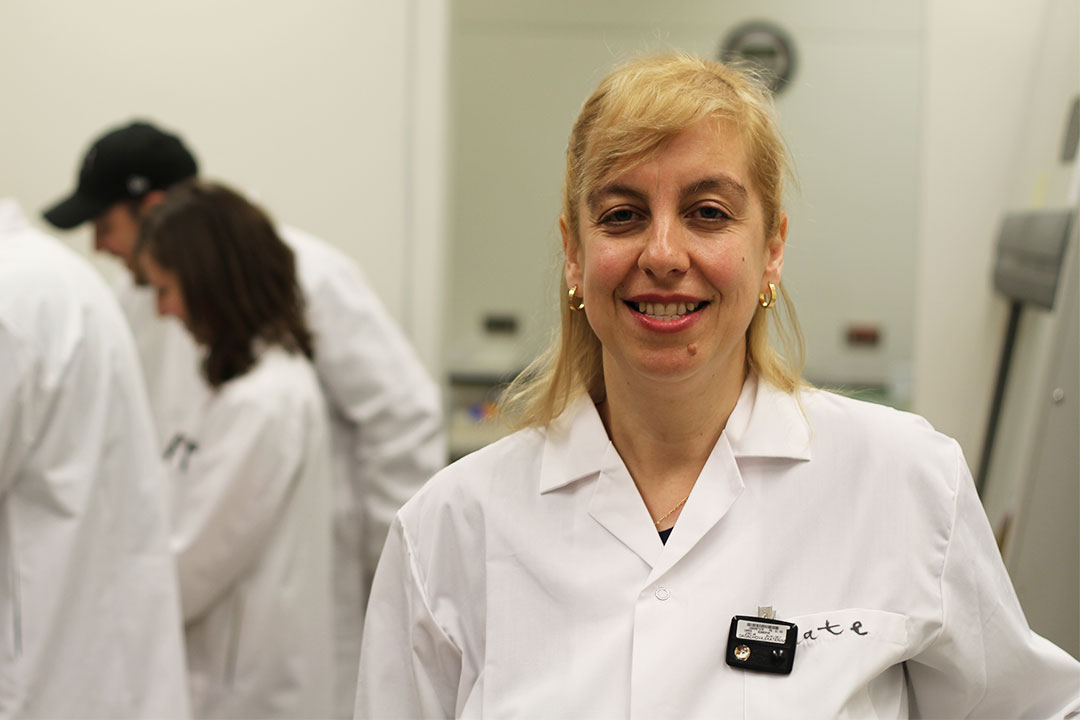
Mushroom cap and shield: Using fungi to protect against radiation
Pharmacy and nutrition researcher Ekaterina (Kate) Dadachova wants military services to put mushrooms on their menu.
By HenryTye GlazebrookFungi such as mushrooms contain a high quantity of melanin, a dark brown or black pigment which provides colour and helps protect them from harsh environments such as those found in areas of radiation exposure.
If Dadachova’s current research moves forward into practical application, that melanin could mean a new avenue of radiation protection for soldiers.
“The published work from ours and other groups has shown that when mice were fed black mushrooms, which are widely used in Chinese and other cuisines, they were protected from really high doses of external radiation,” Dadachova said. “It’s not like you can eat a mushroom and be protected forever, but if you experience a radiation influx while the mushroom’s melanin is in your digestive tract, it protects it from really high doses of radiation.”
Dadachova, a pharmacy and nutrition professor who is also the Chair in Radiopharmacy at the Fedoruk Centre for Nuclear Innovation, currently has two research projects on fungi-produced melanin. The studies are being funded by two grants—a combined total of $700,000 USD per year for three years—through the Defense Threat Reduction Agency (DTRA), which is a part of the United States Department of Defense.
It’s hoped that the first project will harness the melanin from fungi to produce protection from radioactive materials.
“It’s not unlikely that military personnel could find themselves in some kind of situation where there are elevated levels of radiation, maybe after a radiological accident or, God forbid, after a nuclear event,” she said. “The DTRA has an interest in developing fundamental research which can, in the future, benefit more applied research to be used for personnel.”
Though the project is aimed at military application, Dadachova said it has just as much potential for use in nuclear energy and medicine. “If a person develops cancer and they go for radiation therapy, they sometimes lose the ability to eat, to swallow, because of the side effects of radiation,” said Dadachova, adding that melanin could help protect the fragile organs of the digestive system.
“They cannot eat,” Dadachova said. “Some of them die of starvation because they cannot take those feeding tubes, and such cases occur often.”
Dadachova’s second research project is similar in subject matter, but takes the same fungi and looks at them not as possible protectors from radiation but as signifiers of the material’s spread.
Some species of mushroom have developed the unique ability to not only survive in a radioactive environment, but actually thrive in such severe conditions. These growths, known as radiotrophic fungi, are believed to use melanin as a tool to convert gamma radiation into energy for growth. And Dadachova believes this fungal life could be used as cost-effective, sensitive biological detectors of nuclear fallout.
“If there is some kind of illicit nuclear activity going on somewhere and you want to see if someone had performed, say, an underground nuclear test without notification, we want to see if we can train our fungi to recognize certain types of radioactive nuclides—they grow towards it and we can see because they are melanized.”
While her work is fairly grounded for the time being, Dadachova sees possible new and boundless frontiers awaiting its application if one merely tilts their view toward the stars.
“The radiation doses in space are enormous,” she said. “It’s good that the astronauts in the U.S. and cosmonauts in Russia are exploring space, but these people are not like anybody else; they’re selected to be really healthy partly because the doses of radiation they take are huge. Nobody, not even those as fit, as trained, as healthy as those astronauts, would be able to take those radiation doses for that length of time.
“If you’re thinking about prolonged space flight, like a mission to Mars, you need to protect those folks.”

